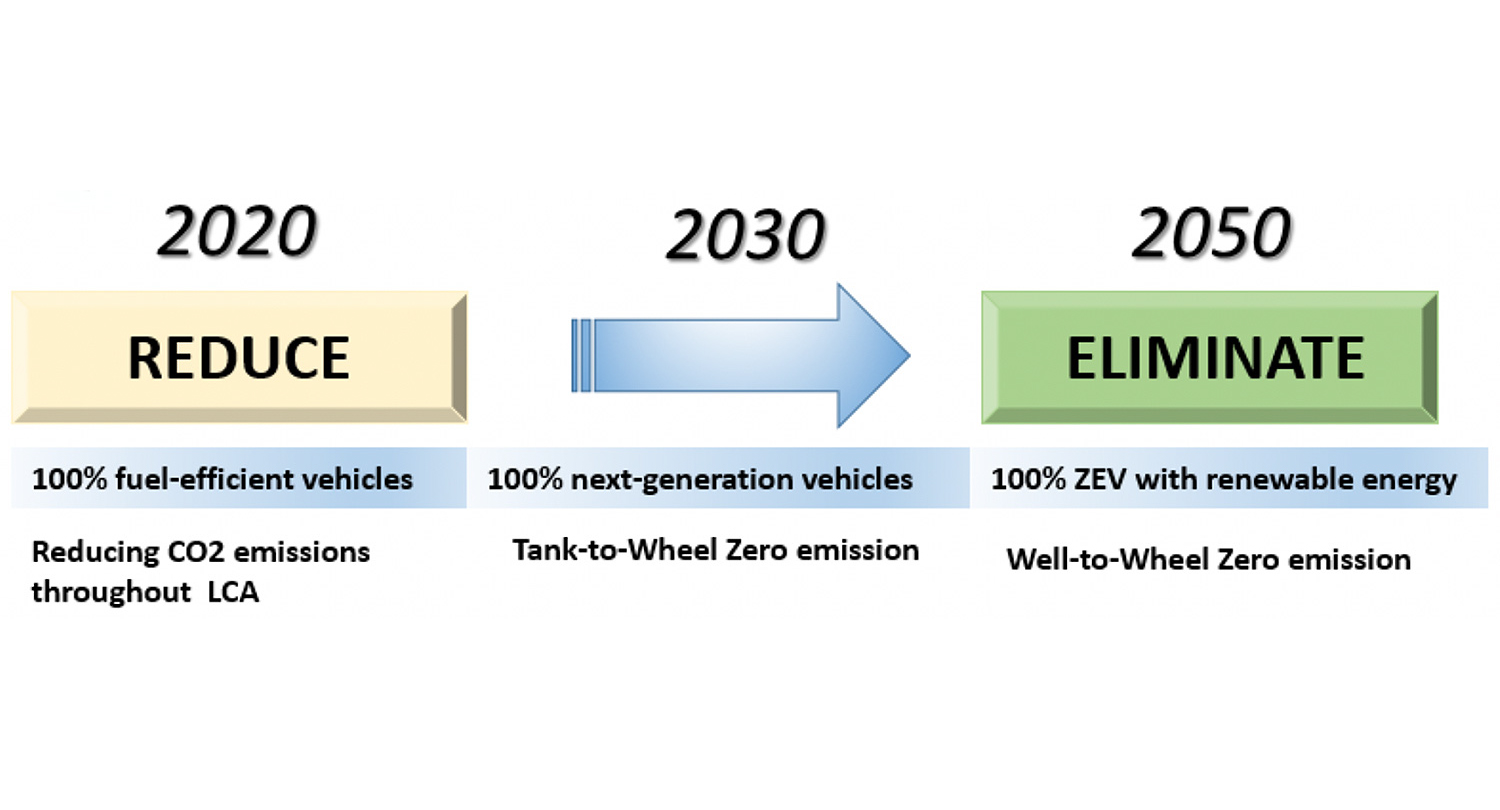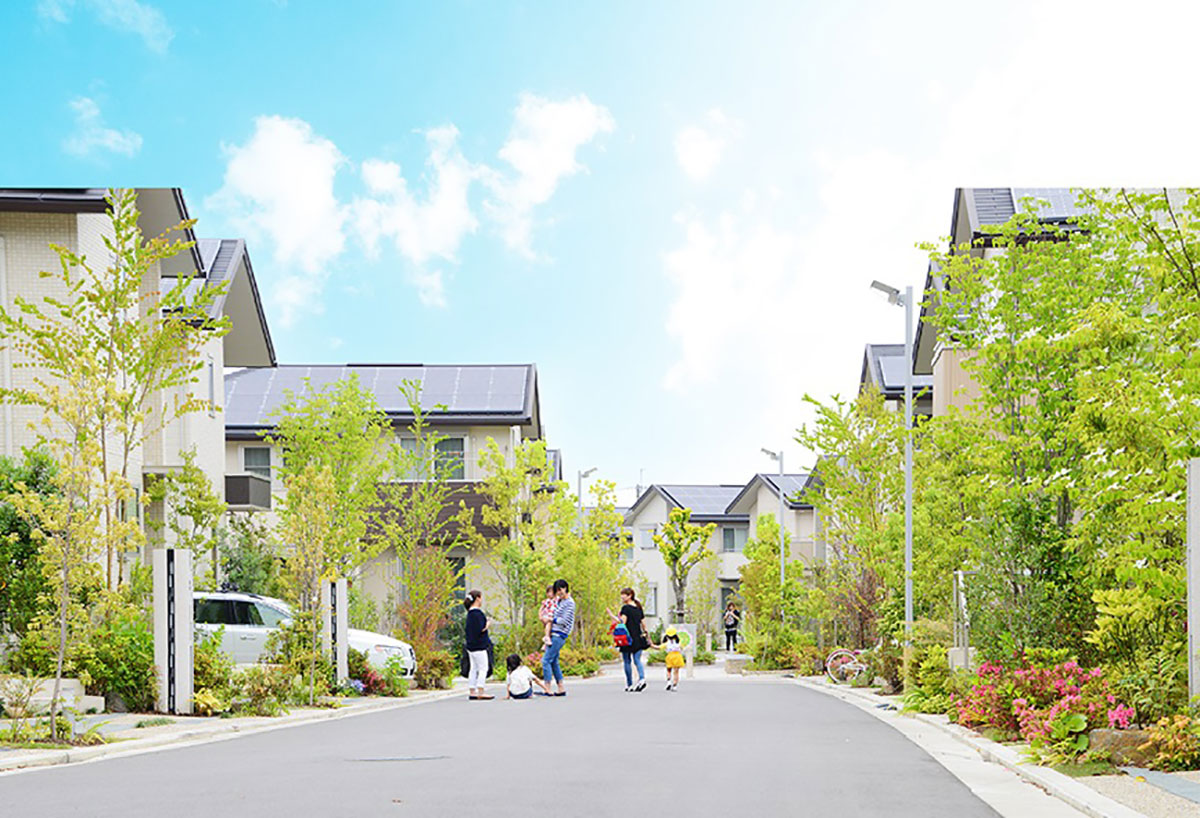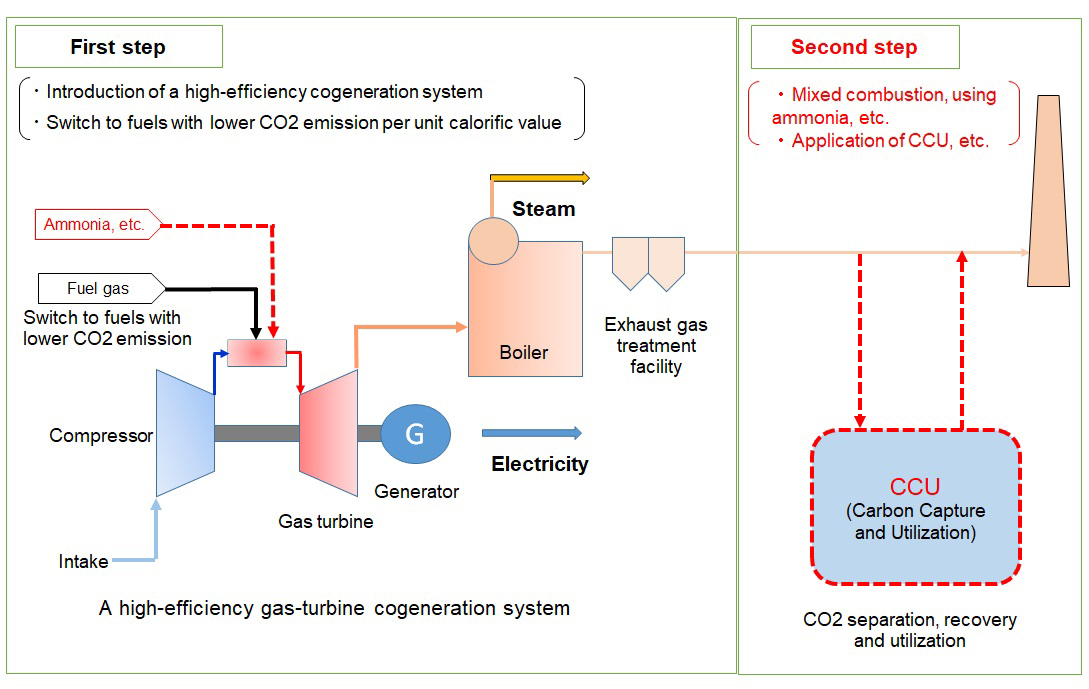Enhancement of electric arc furnace with body rotation for energy saving in steelmaking industry
Daido Steel Co., Ltd.
Outline
Electric furnace steelmaking, which produces steel from steel scrap, is positioned as the final step of the venous system in the resource recycling cycle of iron. The electric furnace (hereinafter referred to as the arc furnace or as the furnace) for melting scrap supplies melting energy to the scrap by arc discharge of a large current generated between the electrode suspended from the roof of the furnace and the scrap, but the scrap at a distance from the electrode (hereinafter referred to as cold spot) does not reach sufficient heat, uneven melting state occurs in the furnace. In order to overcome the disadvantages of conventional measures such as the installation of auxiliary burners near the cold spots, such as the mass consumption of fossil fuels and low thermal efficiency, the idea of rotating furnace body was introduced, which eliminated the cold spots without the use of auxiliary burners and reduced the electric power consumption by 4.9%. Daido Steel challenge to reduce CO₂ emissions throughout the electric furnace steelmaking industry by disseminating and expanding sales of arc furnaces with furnace body rotation mechanisms (trade name: STARQ®).
Description
There are two types of crude steelmaking methods which are widely used in industry: the converter steelmaking and the electric furnace steelmaking. Among them, the electric furnace steelmaking is a method to produce steel products using scrap as a raw material, where the scrap is molten under high-temperature heat caused by an arc discharge between the graphite electrode at the roof and the scrap at the bottom of the furnace.
Electric furnace steelmaking mills contribute to the domestic recycling-oriented society by taking on almost all of the domestic use (about 70%) of about 40 million tons of scrap annually, and play a role in resource security in our country with poor resources. On the other hand, it is also an electric power-consuming industry that consumes about 15 billion kWh annually, and it is required to continuously strive to save energy or reduce CO₂ emissions.
A three-phase AC arc furnace, which is a typical arc furnace, has 3 electrodes located at a triangle position, some amount of scrap will not be molten near the cold spots. Conventionally, auxiliary burners have been installed around cold spots to prevent melting residue, but there are problems such as 1) lower heat efficiency of burner flame than arc discharge, 2) additional running cost caused by burner fuel, and 3) higher maintenance costs to repair the water-cooled panels and refractories on furnace wall damaged by rebounding of burner flames, where those problems are much more remarkable by recent evolution such as enlargement of furnaces for further productivity and as high voltage and high power operation.
A thought itself of physically rotating furnace body in order to move cold spots is an old idea. However, there has been no practice in the world-wide because of the difficulty of rotating furnace body of several hundred tons not to interfere with surrounding structures and pipes and wires. STARQ® that Daido Steel have developed this time has a simple construction that uses a hydraulic motor to drive the roller bearings installed directly under furnace body as a consequence of various studies, ensuring durability and maintainability. The first STARQ® was installed at our Chita Plant (Tokai City, Aichi Prefecture) in 2013.
The proven effects of STARQ® are as following.
1) Since direct visual observation of cold spots is difficult, the water temperature increase of the water-cooled panels placed on the upper inner wall of furnace body was measured as an alternative index for scrap melting and dropping conditions, and it was confirmed that the dispersion of the numerical values in the circumferential direction was greatly improved, that is, the cold spots were decreased.
2) The reduction of cold spots resulted in a 5.2% reduction in power-on time and a 4.9% reduction in electric power consumption.
3) By decrease of excessive heat input to conventional hot spots, erosion of refractories around the hot spots was also suppressed, and the repair cost was 16% reduced.
4) Due to the continuous minor improvements, such as furnace body rotation angle and rotation pattern optimization, further benefits have been proven such as the power-on time 6.1% reduced, and the electric power consumption 6.3% reduced.
Daido have three arc-furnaces at the Chita Plant in addition to the installation of this time. By introducing STARQ® in line with these renewal times, we will take on the challenge of further reducing CO₂ emissions.
In our another business segment of furnace engineering, Daido have already received orders of STARQ® from two customers, where we have started both projects in designing and manufacturing for the customers' start of production in 2021 and 2022. Daido Steel hereby declare the grand challenge of expanding the energy-saving effects of STARQ® in the world-wide electric furnace steelmaking industry and responding to the social demand for CO₂ emission reduction by adapting STARQ® to both new construction and remodeler.
Supplementary information
https://www.daido.co.jp/products/machinery/starq/index.html
https://www.daido.co.jp/common/pdf/pages/technology/journal/backno/2015/86_1/14_equipment.pdf
STARQ® is a trademark registered by Daido Steel Co. Ltd.
Other Innovation Challenges
Promoting low-carbon production through the widespread use of vacuum Carburizing furnaces
Daido Steel Co., Ltd.
Similar Innovation Challenges
Achieve 2050 decarbonization target with Net Zero Energy House!
Sekisui House, Ltd.
Achieving net-zero emissions by promoting renewable energy use through both our monozukuri and products.
DAIWA HOUSE INDUSTRY CO., LTD.






